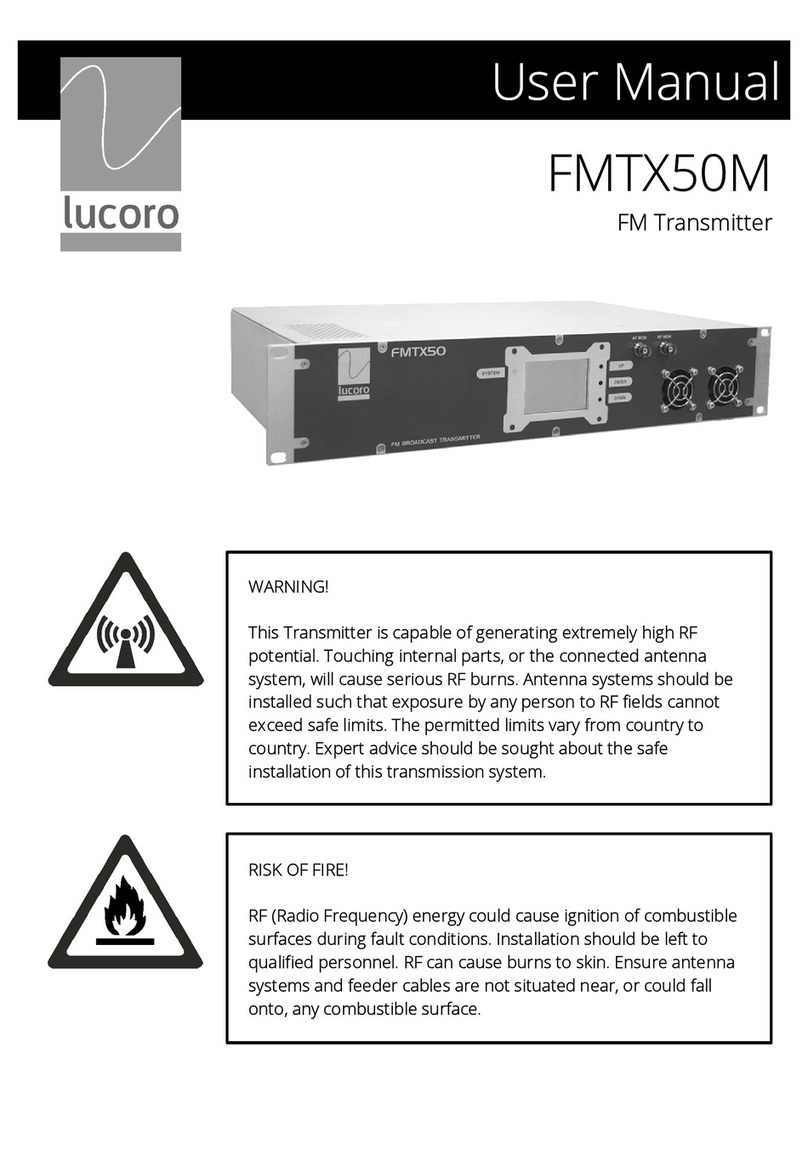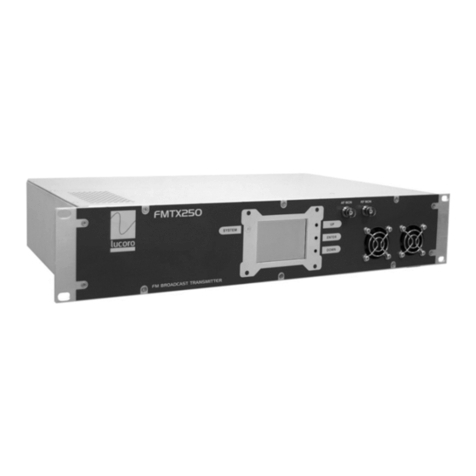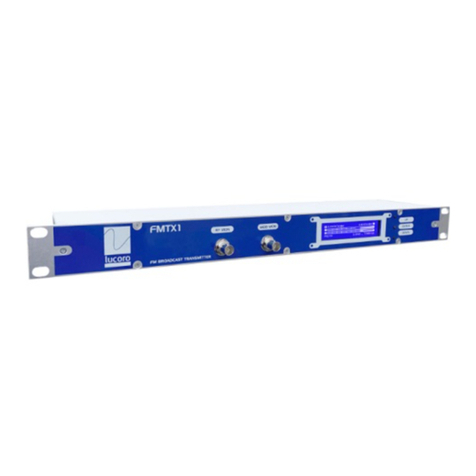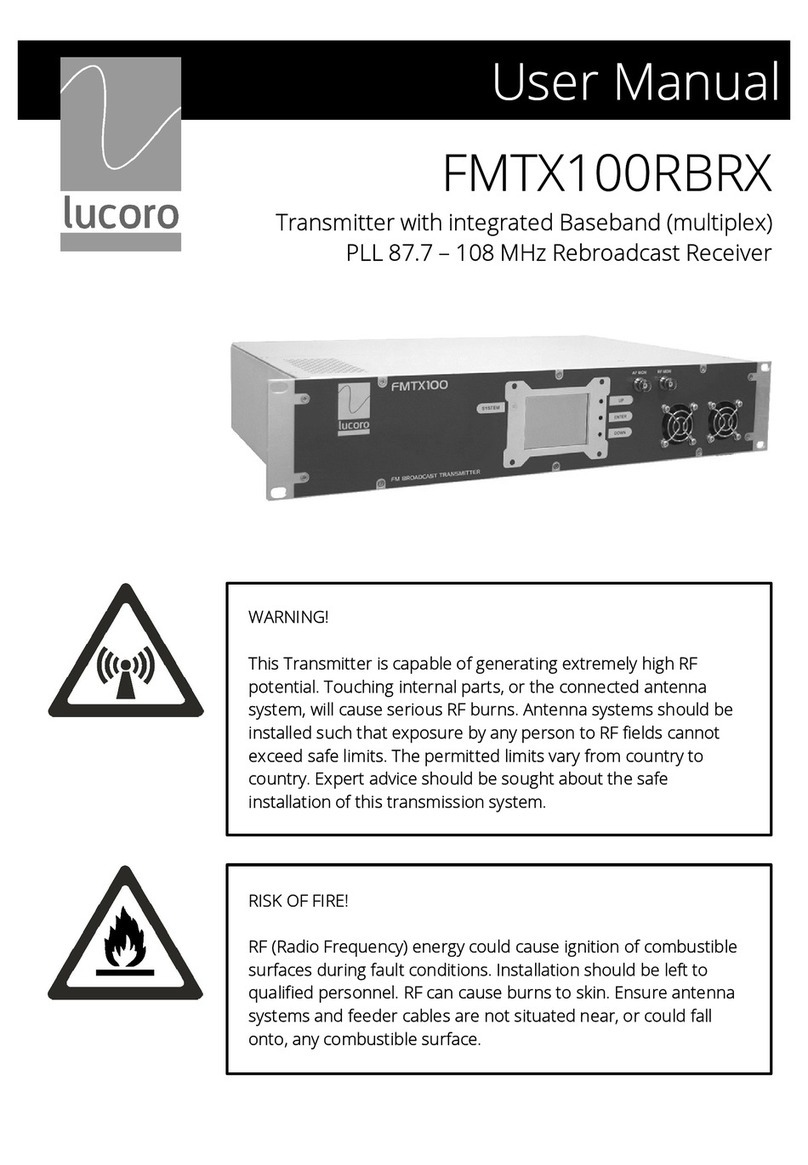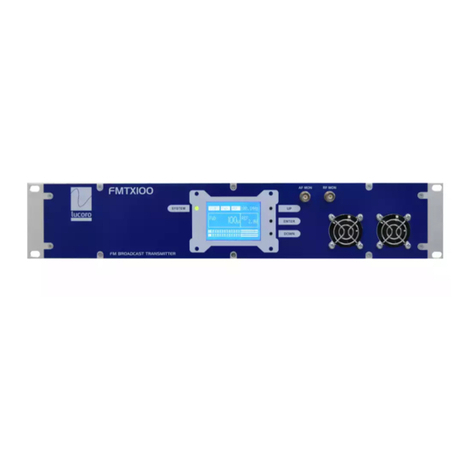
Connect a suitable rated test load to the RF OUPUT socket before
connecting the unit to mains power. IMPORTANT! FAILURE TO DO SO
MAY RESULT IN DAMAGE NOT COVERED BY WARRANTY.
Power-up the unit and reduce the output power (using the rear panel
RF OUTPUT POWER ADJUST control) to the lowest level.
Using the front panel display and buttons, set the desired transmission
frequency.
Power down the unit, wait a few seconds and, whilst pressing
ENTER for 5 seconds, power up the unit. After a short while, the
currently set transmission frequency will appear on the display
with the rest of the display blanked-out. Use the UP and DOWN
buttons to select the desired frequency. Press ENTER to store.
The new frequency will flash rapidly to indicate that it is now
stored. The unit will begin its boot process and, after a few
seconds the display will return to normal mode, and the
transmitter will begin broadcasting.
Using the front panel display and buttons, set the desired reception
frequency.
Power down the unit, wait a few seconds and, whilst pressing UP
and DOWN for 5 seconds, power up the unit. After a short while,
the currently set receiver frequency will appear on the display,
with the rest of the display blanked-out. Use the UP and DOWN
buttons to select the desired frequency. Press ENTER to store.
The new frequency will flash rapidly to indicate that it is now
stored. The unit will begin its boot process and, after a few
seconds the display will return to normal mode, and the
transmitter will begin broadcasting.
The deviation level of the rebroadcast should match that of the parent
station. Note that, like all rebroadcast transmissions, the level of the
higher frequency subcarriers, particularly the RDS, will be slightly lower,
due to IF filtering and distance fade. Most parent stations that supply
relay sites have their RDS injection level set slightly higher, to
compensate for this.
The optimum received signal level is 50dBu. Lower levels
will may contain noise which could cause non-compliance
with regulatory spectral occupancy limits. Likewise,
received signal levels higher than 50dBu will over-load


